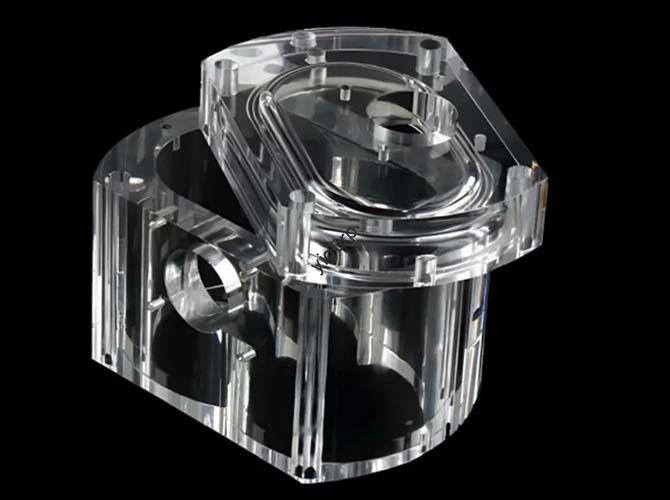If you’re a manufacturer, designer, or entrepreneur considering adopting new production technologies, Probabilmente ne hai sentito parlare 3D Printing. But is it worth the investment? This guide breaks down the key pros and cons of 3D printing—backed by real data and use cases—to help you make an informed decision.
1. Core Overview: What Makes 3D Printing Unique?
Before diving into pros and cons, let’s clarify: 3D Printing (or additive manufacturing) builds objects layer by layer from digital CAD models, unlike traditional “subtractive” methods (PER ESEMPIO., MACCHING CNC) that remove material from a solid block. This fundamental difference drives its biggest advantages—and challenges.
2. The Pros of 3D Printing: How It Solves Business Pain Points
3D printing’s strengths make it a game-changer for specific use cases. Di seguito sono riportati i suoi migliori vantaggi, with actionable examples:
| Categoria di vantaggio | Vantaggio chiave | Esempio nel mondo reale |
| Flessibilità di progettazione | Achieves complex geometries (PER ESEMPIO., Strutture reticolari, canali interni) impossible with traditional methods. | A medical device company used 3D printing to create a heart stent with tiny, custom flow channels—improving patient recovery by 30%. |
| Prototipazione rapida | Turns CAD designs into physical prototypes in hours (contro. weeks for molds), speeding up product development. | A startup reduced its new smartphone case design cycle from 8 settimane a 5 days using 3D printing. |
| Efficienza materiale | Reduces waste by 40-60% (only uses material needed for the part, not excess for cutting). | An aerospace firm cut aluminum waste from 70% (MACCHING CNC) A 15% (3D Printing) Per i componenti del motore. |
| Energia & Sostenibilità | Consumes 30-50% less energy than traditional manufacturing, lowering carbon emissions. | A furniture brand’s 3D-printed chairs reduced production-related CO₂ by 45% compared to injection-molded versions. |
| Low-Volume Cost Savings | Eliminates expensive molds (costi \(10k-\)100k+), Rendere a prezzi accessibili la produzione di piccoli batch. | A jewelry designer now produces custom necklaces in batches of 50 (contro. 500 minimum for molding) without raising prices. |
3. The Cons of 3D Printing: Limitazioni da considerare
While powerful, 3D printing isn’t a one-size-fits-all solution. Here are its key drawbacks—and who they impact most:
3.1 High Upfront & Operational Costs
- Stampanti industriali: Costo \(50k-\)1M+ (contro. \(10k-\)50k for basic CNC machines).
- Materiali speciali: Metal powders or high-performance resins can cost \(50-\)500 per chilogrammo (contro. \(2-\)10 for raw plastic pellets).
- Who it affects: Small businesses with tight budgets or those needing only basic production.
3.2 Materiale & Quality Limitations
- Limited materials: Most printers only work with plastics, resine, or a few metals (PER ESEMPIO., titanio, acciaio). Plastiche ad alta temperatura (for engines) or flexible rubbers are still rare.
- Accuracy gaps: Precisione dimensionale (± 0,1 mm) e rugosità superficiale (often requiring post-processing) may not meet engineering standards for critical parts (PER ESEMPIO., car brakes).
- Case in point: A automotive supplier had to reject 3D-printed brake calipers because their surface roughness caused brake fluid leaks.
3.3 Velocità & Scalability Issues
- Slow for mass production: A 3D printer takes 2-8 ore da fare 1 plastic part; an injection molding machine makes 100+ all'ora.
- Who it affects: Brands needing 10k+ units monthly (PER ESEMPIO., water bottle manufacturers).
3.4 Ambientale & Legal Risks
- Waste from failed prints: 15-20% of 3D prints fail (due to layer adhesion or design errors), creating non-recyclable waste (PER ESEMPIO., some resins).
- Intellectual property (IP) theft: Digital 3D files are easy to copy, leading to counterfeit products.
- Esempio: A toy company found 3D-printed knockoffs of its designs being sold online within 2 weeks of launch.
4. Pros vs. Contro: A Quick Decision Checklist
To simplify your choice, use this table to match 3D printing’s strengths/weaknesses to your needs:
| Your Business Need | 3D Printing Is a Good Fit? | Perché? |
| Produzione di piccoli batch (1-1,000 unità) | ✅ Yes | Avoids mold costs; rapido inversione di tendenza. |
| Complesso, custom designs | ✅ Yes | Enables geometries traditional methods can’t match. |
| Produzione di massa (10k+ units monthly) | ❌ No | Too slow; Lo stampaggio a iniezione è più economico. |
| Parti critiche (PER ESEMPIO., Impianti medici) | ⚠️ Maybe | Requires high-quality printers/materials; test rigorously first. |
| Tight budget (under $50k for equipment) | ❌ No | Upfront printer costs are too high. |
5. La prospettiva della tecnologia Yigu sulla stampa 3D
Alla tecnologia Yigu, vediamo 3D Printing as a complementary tool—not a replacement for traditional manufacturing. Its strengths (flessibilità, sostenibilità) solve client pain points like slow prototyping or custom parts, but we always address limitations upfront: we help clients choose printers/materials for their use case (PER ESEMPIO., SLA for detailed prototypes, SLM for metal parts) and optimize designs to reduce waste. Per esempio, we helped a medical client adjust their 3D-printed implant design to cut post-processing time by 30%. While challenges exist, 3D printing’s future (faster speeds, more materials) makes it a smart long-term investment for businesses prioritizing innovation.
Domande frequenti: Your Top 3D Printing Questions Answered
- Q: Can 3D printing replace injection molding for my plastic products?
UN: Only if you make small batches (Sotto 1,000 unità). For 10k+ units, injection molding is 50-70% cheaper and 10x faster.
- Q: Are 3D-printed parts strong enough for industrial use?
UN: It depends—metal 3D-printed parts (PER ESEMPIO., SLM titanium) have 90-95% the strength of forged metal, but plastic parts may not handle heavy loads. Test with your specific material/design first.
- Q: How can I reduce 3D printing waste from failed prints?
UN: Use simulation software to check designs before printing, choose high-quality materials, and train staff on printer calibration. Yigu Technology’s workflow tools cut client failure rates from 18% A 7%.
